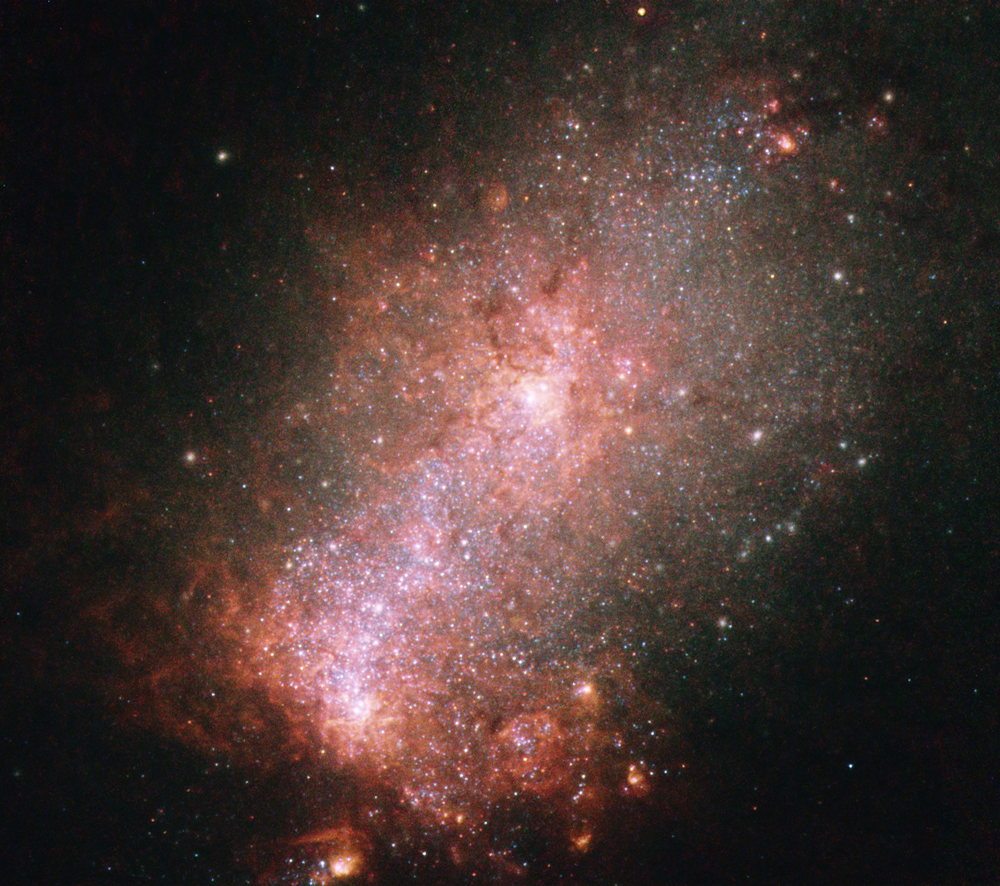
Extreme NGC 3125 (2014)
This irregular blob of a galaxy has some serious star formation going on. The star cluster slightly up and to the right of center is the one referenced in this proposal as ‘The Most Extreme Wolf-Rayet Star Cluster Known in the Local Universe’ by Dr. Rupali Chandar. Watch her talking about her findings regarding star clusters in general here. They talk about the HLA at the end! I am dubious about ever making a discovery that forever changes the way we view the universe as is used for a closing statement, but yeah, the HLA is pretty sweet.
Anyway, if you dare, you can attempt to read a paper on NGC 3125-A1 here. If not, I will roughly translate it for you in a single sentence: Hot diggity dang, there’s a lot of ionized helium there.
Some things to point out: The fuzzy, white “stars” dotting the edges of the galaxy are actually globular clusters, so that gives you a better sense for the scale of the galaxy. It’s not a huge galaxy but the the star formation is raging as can be inferred by the red filaments of H-alpha which virtually encompass the whole thing and the usual accompanying hot, young, blue stars. Annotation of star cluster locations is here, which I made by referencing the paper I mentioned earlier.
This picture features wideband infrared, green, blue, and ultraviolet filters along with the lovable H-alpha filter. Note I did use the F814W filter across all three channels but mostly it inhabits the red along with the H-alpha.
Red: HST_10400_01_ACS_HRC_F814W_sci + HST_10400_01_ACS_HRC_F658N_sci
Green: HST_10400_01_ACS_HRC_F555W_sci
Blue: HST_10400_01_ACS_HRC_F435W_sci + HST_10400_01_ACS_HRC_F330W_sci
North is NOT up. It is 26.9° counter-clockwise from up.
Copyright information:
Hubble data is public domain, but I put a lot of work into combining it into beautiful color images. The minimal credit line should read: NASA / ESA / J. Schmidt

This work is licensed under a Creative Commons Attribution 3.0 Unported License.


